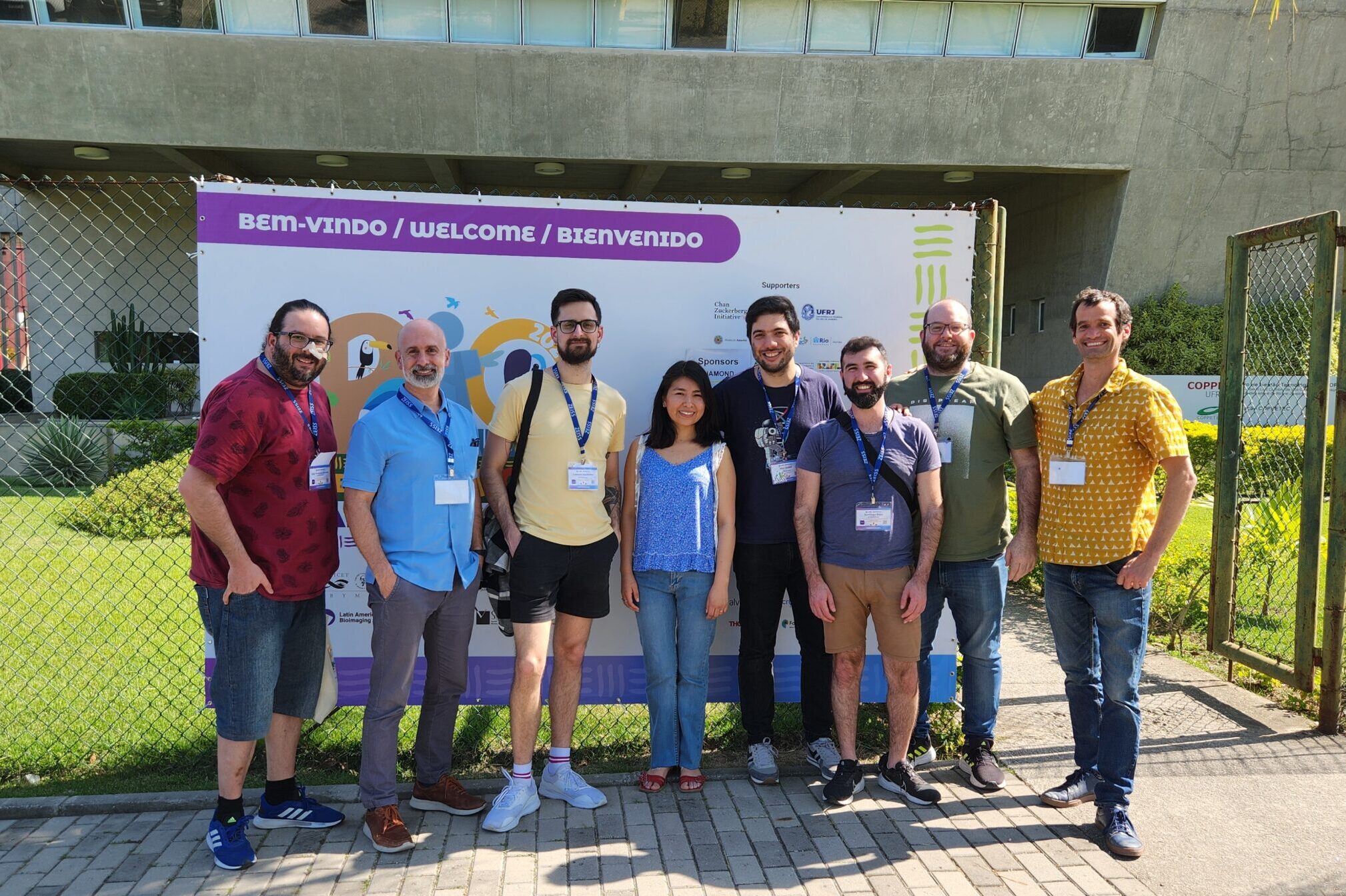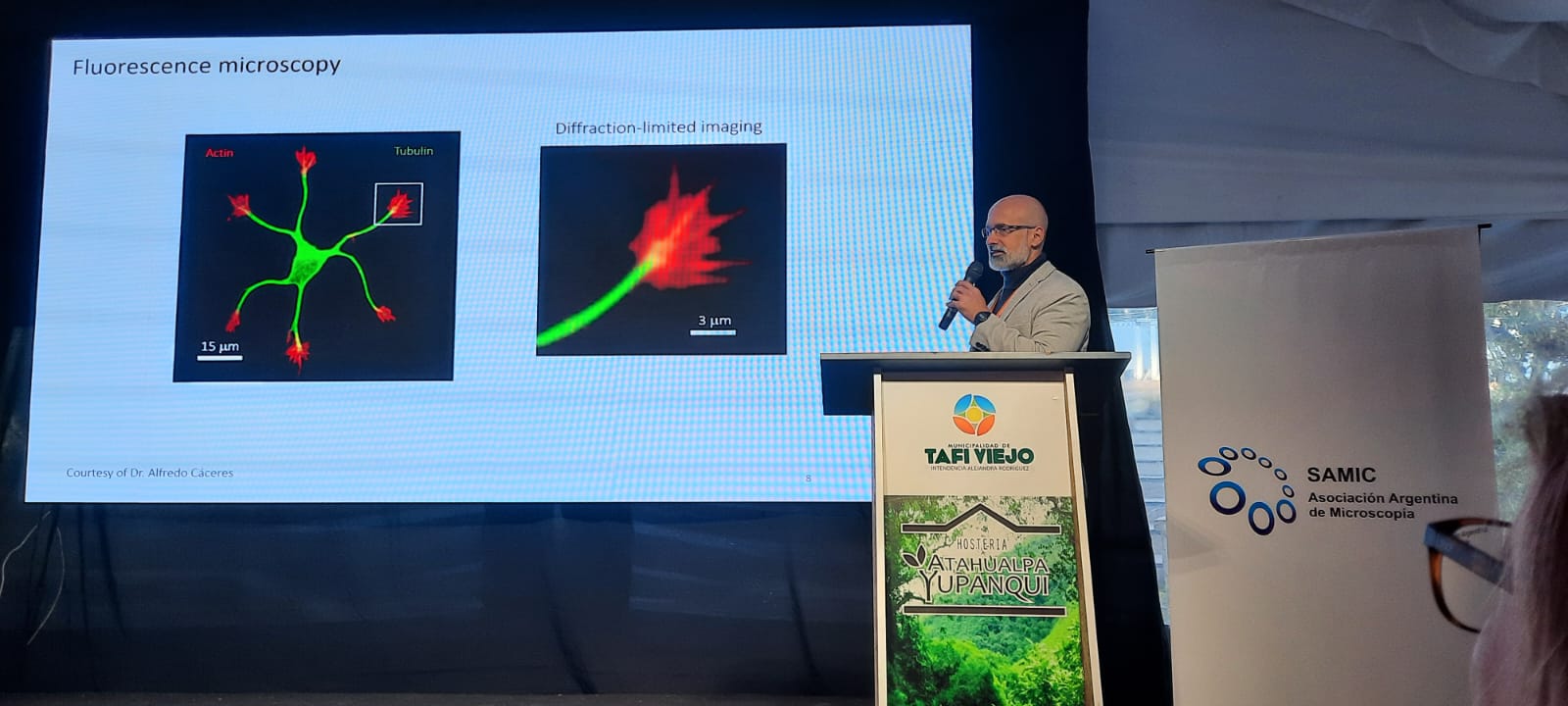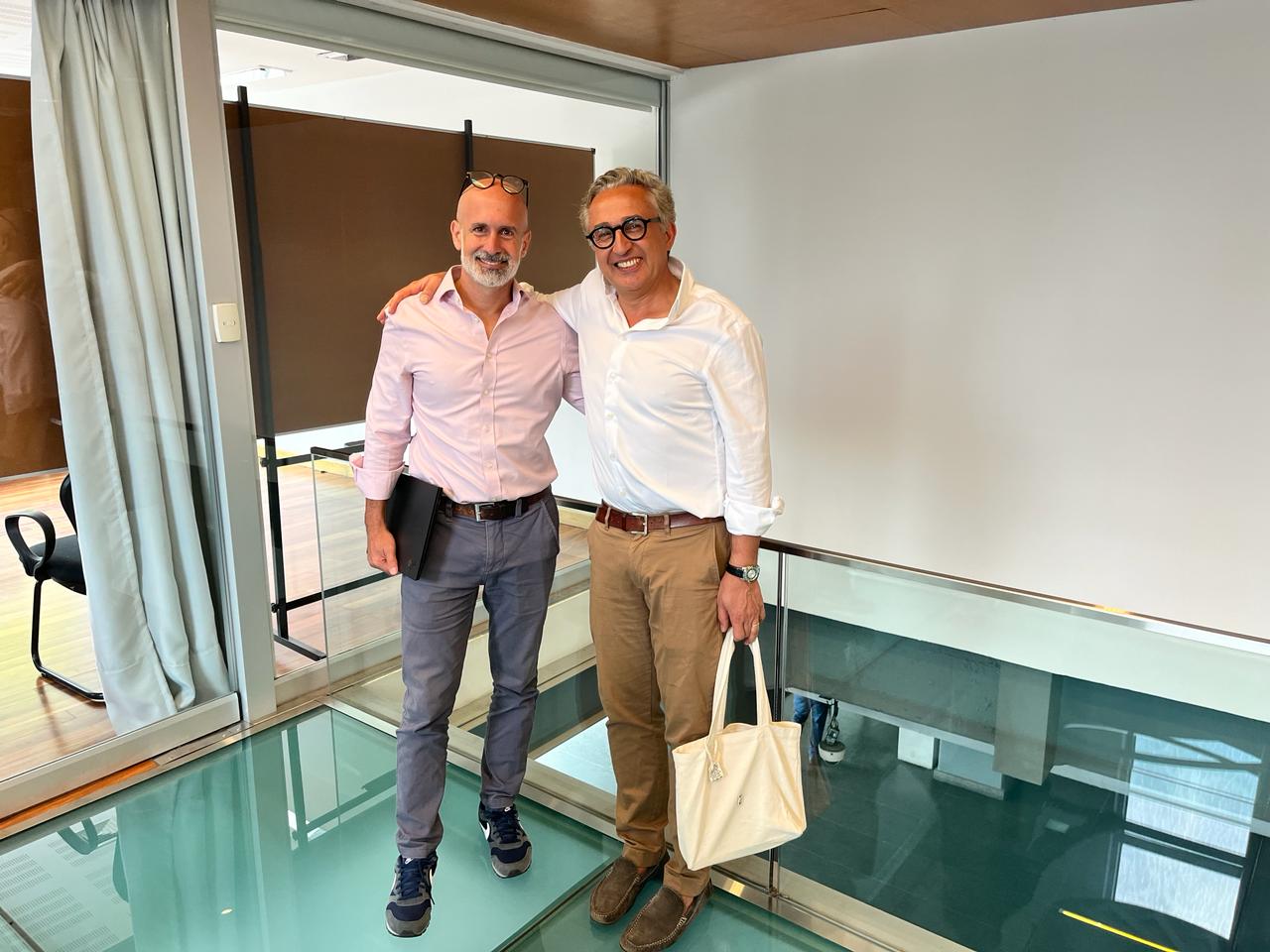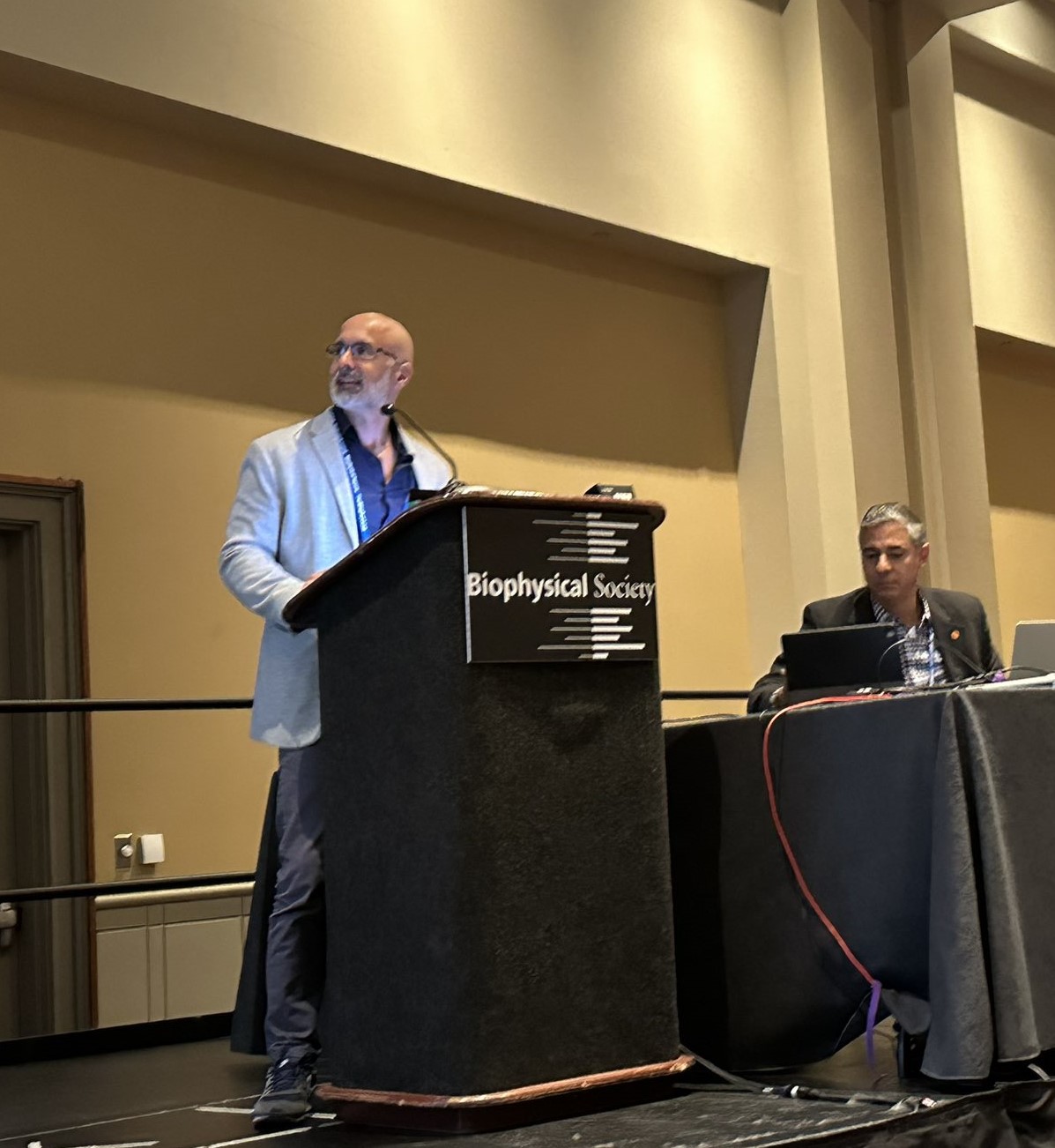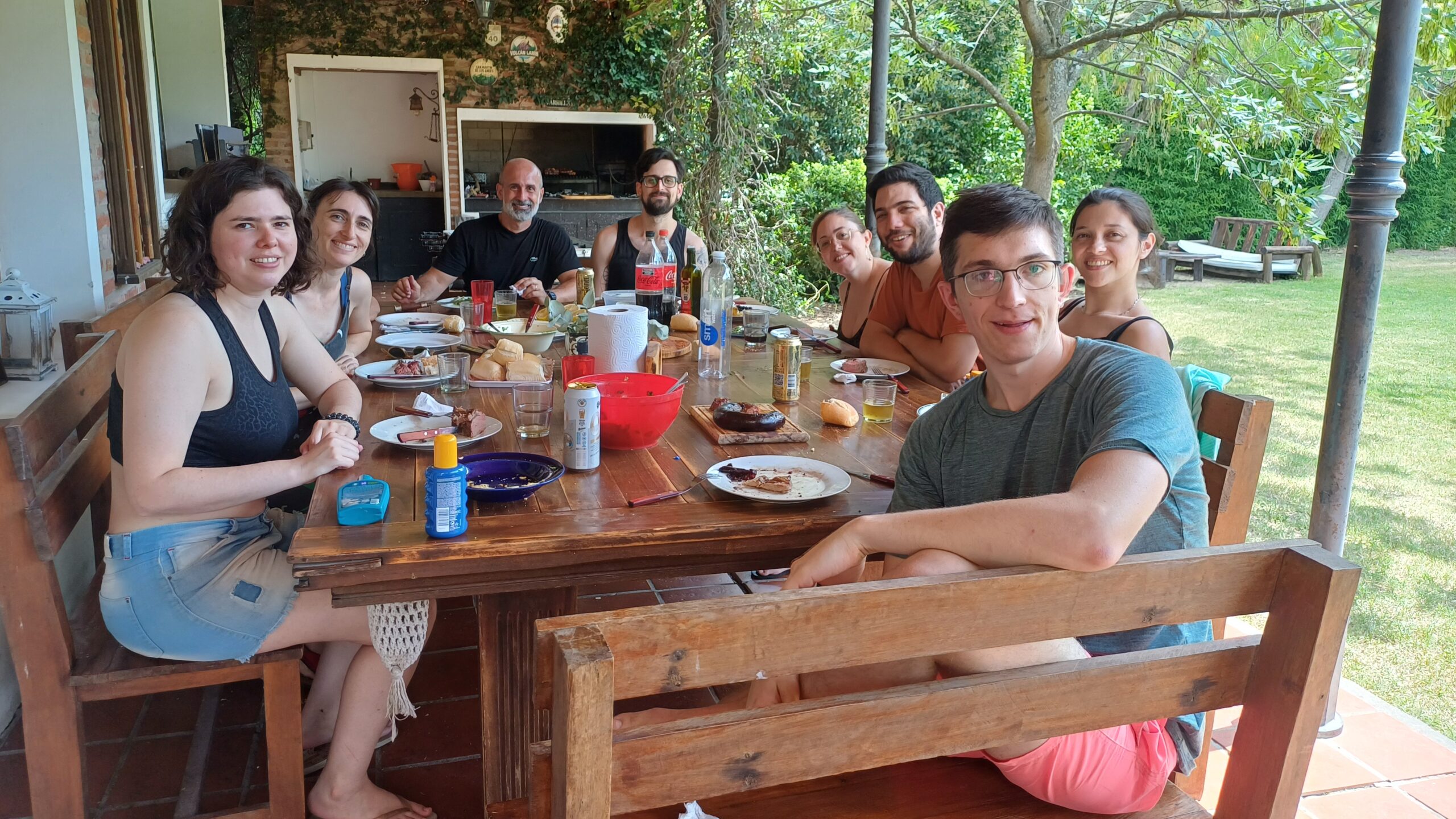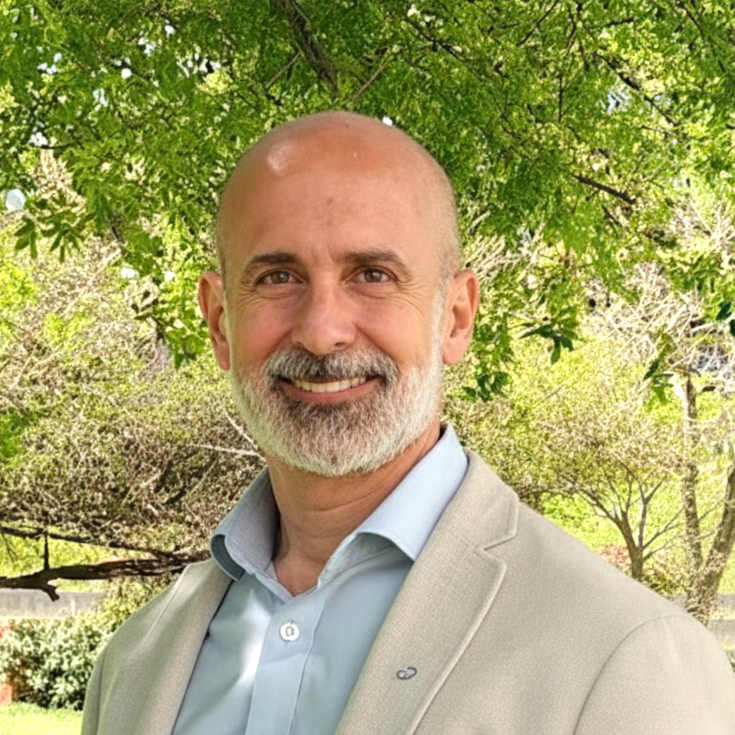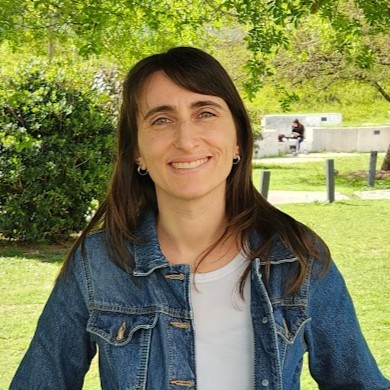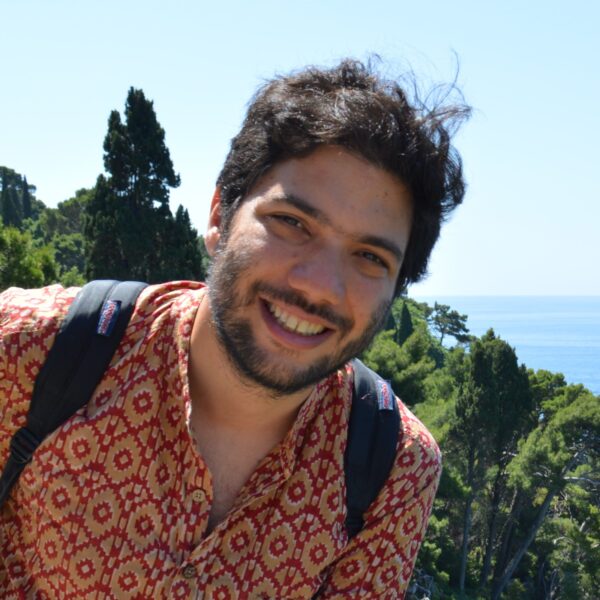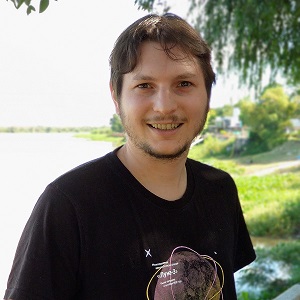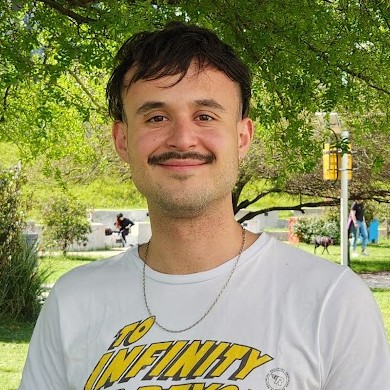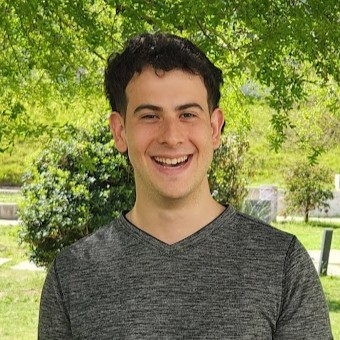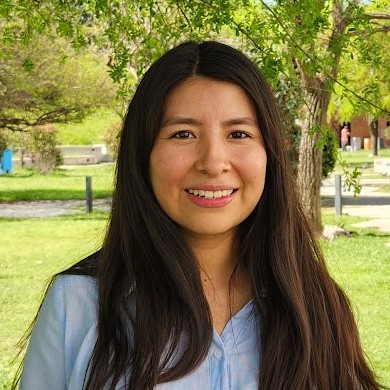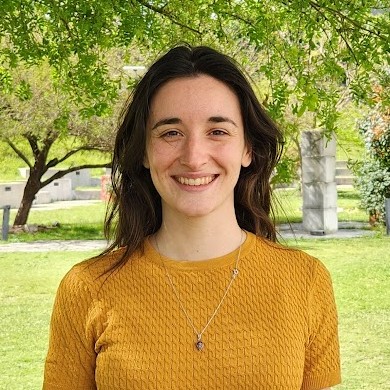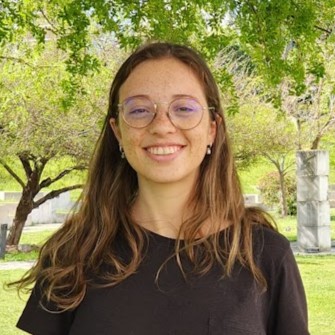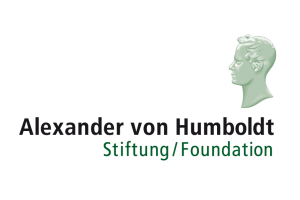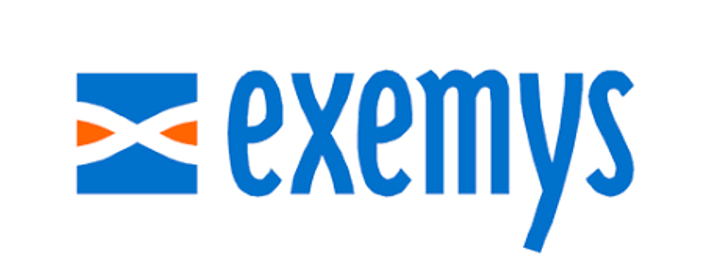Center for Bionanoscience Research (CIBION), National Scientific and Technical Research Council (CONICET)
Physics Department, Faculty of Exact and Natural Sciences, University of Buenos Aires (UBA)
Using optical methods, we explore the properties and technological applications of nanoparticles, single molecules, nanostructured materials, supramolecular assemblies, biological and hybrid nanosystems.
The Applied nanoPhysics Group was launched in October 2009 at the Physics Department, Faculty of Exact and Natural Sciences, of the University of Buenos Aires (UBA)
In 2012 we moved our labs to the Center for Bionanoscience Research (CIBION) of the National Scientific and Technical Research Council (CONICET), while Prof. Stefani still holds his position at the Physics Department of the University of Buenos Aires.
CURRENT RESEARCH ACTIVITIES
Fluorescence nanoscopy.
Super-resolution fluorescence microscopy, also known as fluorescence nanoscopy, has revolutionized biological imaging because they provide deep sub-wavelenght spatial resolution while keeping the low-invasiveness of far-field optical interrogation. We apply and optimize well-established methods like STED and STORM, and develop new ones, such as MINFLUX, and open-source software for fluorescence nanoscopy. With them, we address questions of cellular and neuronal biology.
Optical printing colloidal nanoparticles.
Colloidal chemistry enables the fabrication of nanoparticles of different shapes, sizes and material compositions, that exhibit unique physical and chemical properties, inexistent in bulk materials. In order to make use of those properties in devices and circuits, it is necessary to develope methods to bring the colloidal nanoparticles from the liquid phase to specific locations of solid substrates. We address this challenge using optical forces.
Self-assembled Nanophotonic Devices.
Semiconductor-based devices are approaching intrinsic limits of speed and heat dissipation.
Optical devices are faster and practically loss-less, but their size miniaturization is limited by the wavelength of light. Nanophotonics and Plasmonics deals with the manipulation of light at the nanoscale. We investigate light-matter interaction between single-photon emitters and metallic nanoparticles organized in nanodevices by self-assembly.
LATESTS NEWS
Latin Bioimaging Meeting in Rio de Janeiro
The Latin Bioimaging (LABI) Meeting in Rio Janeiro was a nice opportunity to meet and discuss with friends and collaborators. Florencia Choque, Alan Szalai, Luis Marcano, Gonzalo Escalante, Santiago Sosa and Fernando Stefani participated, along with collaborators Lía Pietrasanta, Alfredo Cáceres, Francisco Barrantes, Nicolás Unsain, Mariano Bisbal, Antonella Vila, [...]
SAMIC 2024 – Tucumán
The Argentina Association of Microscopy (Asociación Argentina de Microscopía - SAMIC), established as non-profit organization in 1995 has been organizing a periodic meetings every two years, approximately, since 2009. This time, the SAMIC meeting was organized in Tucumán, and counted with the participation of numerous national and international colleagues. [...]
Visit of former Ph.D. student Dr. Federico Barabas
Thank you Fede for dropping by!
Optical printing of colloidal nanoparticles moves to UNSAM
Dr. Julián Gargiulo and Dr. Ianina moved to the Institute of Nanosystems at the National University of San Martín (Buenos Aires, Argentina) to start a new group on nanophotonics. To support them and help them start with maximum momentum, we have lend them a full setup of topical manipulation [...]
Prof. Vahid Sandoghdar visit us
Prof. Vahid Sandoghdar, director of the Nano-Optics division of the Max Planck Institute for the Science of Light, visited us and gave a talk about his latest research. Prof. Sandoghdar is one of the most important pioneers of nano-optics. He has made breakthrough experiments of single molecule [...]
Annual Meeting of the Biophysical Society 2024 – Invited talk at the Molecular Fluorescence Subgroup
Prof. Stefani was invited by the Molecular Fluorescence Subgroup of the Biophysical Society to give a lecture on "Fluorescence nanoscopy with sub-10 nm resolution" at the Annual Meeting of the Biophysical Society 2024, held in Philadelphia from the 10th to 14th of February. Many thanks to the orgenizers [...]
Group retreat in Buenos Aires province
We made a one day trip to the countryside to have some asado and relax. Ana Wendel, Lucía Lopez, Ianina Violi, Gonzalo Escalante, Fernando Stefani, Luciana Martínez, Alan Szalai, Lars Richter (former member of our group visiting us from Germany)
Asado de fin de año de CIBION
Great fun at the yearly BBQ of CIBION 🙂
COLLABORATORS
STEFAN HELL
Max-Planck-Institute for Biophysical Chemistry (Göttingen, Germany)
THOMAS JOVIN
Max-Planck-Institute for Biophysical Chemistry (Göttingen, Germany)
ALFREDO CÁCERES
Instituto Universitario de Ciencias Biomédidas de Córdoba (Córdoba, Argentina)
PHILIP TINNEFELD
Ludwig-Maximilians-University Munich (Germany)
GUILLERMO ACUNA
University of Fribourg (Switzerland)
ANDRÉS ZELCER
Centro de Investigaciones en Bionanociencias (Buenos Aires, Argentina)
ANDREA BRAGAS
University of Buenos Aires (Argentina)
DARÍO KRAPF
Instituto de Biología Molecular y Celular de Rosario (IBR – Santa Fe, Argentina)
SABRINA SIMONCELLI
University College London (UK)
DAMIAN REFOJO
Biomedicine Research Institute of Buenos Aires (Argentina)
RODRIGO PALACIOS
Universidad Nacional de Río Cuarto (Córdoba, Argentina)
OSCAR CAMPETELLA
Universidad Nacional de General San Martín (Buenos Aires, Argentina)

